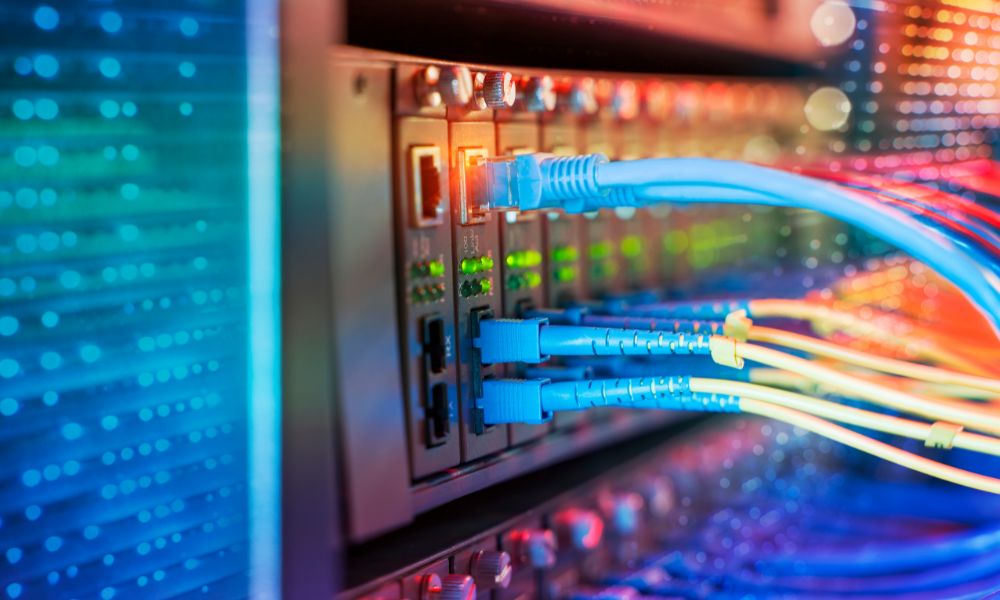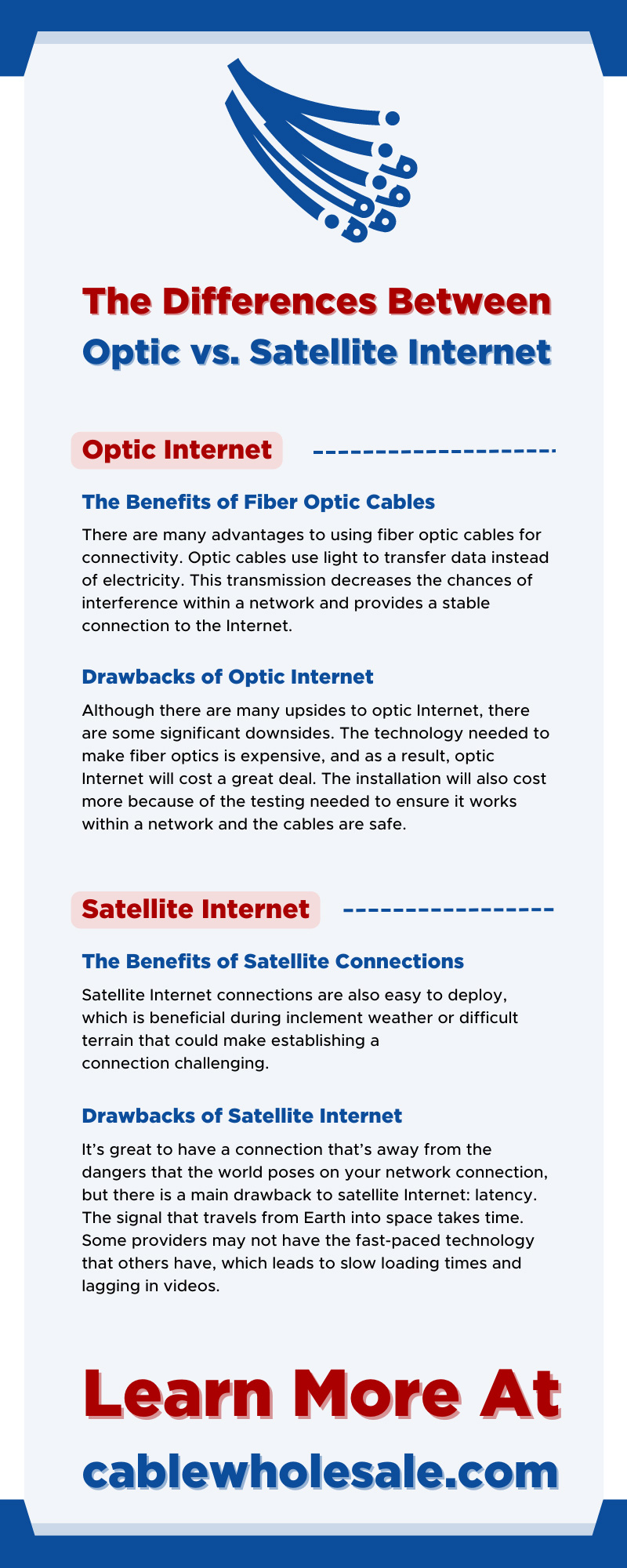
There are various ways to connect to the Internet. Two of these connections, optic and satellite, have differences, but each could benefit you and ensure you have the connection you need. Learn more about the differences between the optic and satellite Internet below and determine which connection is best for you.
Optic Internet
Throughout decades of experimentation, fiber optic cables eventually became a reliable source of connection for phone companies. This technology later became a valuable tool in providing Internet connections.
Optic Internet uses fiber optic Internet cables to connect a network to the web. And while there are other network cables that may do this, many don’t meet the standard that fiber optic technology has.
The Benefits of Fiber Optic Cables
There are many advantages to using fiber optic cables for connectivity. Optic cables use light to transfer data instead of electricity. This transmission decreases the chances of interference within a network and provides a stable connection to the Internet.
The dozens of fibers in the cable transfer light at exceptionally fast speeds, outclassing the fastest coaxial or Ethernet cables. The bandwidth of a fiber optic cable reaches a capacity of up to 1Gbps since light travels so far.
All of these traits of optic technology make optic Internet an excellent choice for staying connected. The fast transfer speeds and great bandwidth ensures you download and upload information faster, making messaging and emailing easier.
Plus, the protection from interference ensures that data will transfer safely, and you won’t need to worry about incomplete downloads. Optic Internet is a great way to improve business, and many people will benefit from its use.
Drawbacks of Optic Internet
Although there are many upsides to optic Internet, there are some significant downsides. The technology needed to make fiber optics is expensive, and as a result, optic Internet will cost a great deal.
The installation will also cost more because of the testing needed to ensure it works within a network and the cables are safe. The glass fibers in the cable are more fragile than the copper wires and may break under pressure when the cable is in a tight space.
If you plan to expand your network that already has optic Internet, splicing the wires will take great precision since it’s a delicate procedure. If done incorrectly, you may suffer from a poor connection. Opic Internet is a great way to improve networks and will give you a high-quality connection to the Internet, but you may want to consider costs and risk assessment before making the transition.
Who Uses Optic Internet?
Companies specializing in communication typically need the fastest method to send messages or transfer data. An optic Internet connection is ideal for businesses that require fast transmission without the risk of interference.
Data centers need fast transmissions to help people connect to networks, and a fiber optic connection is the best way. Some of the most reputable Internet providers will use optic Internet for their connections to ensure customers have stable connections and they have the fastest transfer rates of data.
Partial Fiber Optic Networks
It’s possible to have a combination of optic Internet and regular cable connections in some networks. A partial fiber optic network will use optic cables leading from the data center to the cable box. Then, the cable box converts data from light to electricity and continues its transmission along electrical network cables.
Using different cables for the connection significantly changes the cost. An electrical alternative will cost less than a fully optic option. The connection will remain stable in most cases, but the optic Internet may suffer without fiber optics on both ends.
Satellite Internet
Since its origins in 2003, many people have and still use satellite Internet. This method of Internet connection keeps people connected with a satellite in Earth’s lower or upper orbit.
A data center will have access to a satellite to broadcast a signal that will eventually connect to your modem. A dish in a wide open space is necessary for this connection, so many homes and companies will install a dish on their roofs.
The Benefits of Satelite Connections
When certain causes of interference affect terrestrial connections, a satellite connection will ensure that you have the Internet access you need. One of the primary differences between optic and satellite Internet is their connection.
While the connection via cable is earthbound, the satellite connection is high above the clouds. If you have a cable Internet connection that falters, the satellite service will make a reliable backup. That means your business will continue to run as you connect with people via satellite.
Satellite Internet connections are also easy to deploy, which is beneficial during inclement weather or difficult terrain that could make establishing a connection challenging.
Drawbacks of Satelite Internet
It’s great to have a connection that’s away from the dangers that the world poses on your network connection, but there is a main drawback to satellite Internet: latency. The signal that travels from Earth into space takes time.
Some providers may not have the fast-paced technology that others have, which leads to slow loading times and lagging in videos. Internet providers seek to improve their connection speeds by implementing new technology that will ensure the data travels faster with better bandwidth. However, this is a primary issue among satellite connections and may take some time before it’s as potent as optic Internet.
Who Uses Satelite Internet?
Since satellite Internet is available worldwide, many use it for various purposes. Businesses use this connection to communicate with associates in other countries since both parties have access to it. Families and individuals will use it for their Internet if setting up a wired network is difficult in their area.
Rural residents will depend on satellite connections if they can’t connect with optic Internet and need a further connection. While fiber optic connections are available for many in certain areas of the world, satellite access keeps people connected globally.
Our connection to the Internet is possible thanks to optic and satellite Internet. Consider the difference between these two and how they may help you stay connected to what matters to you.




